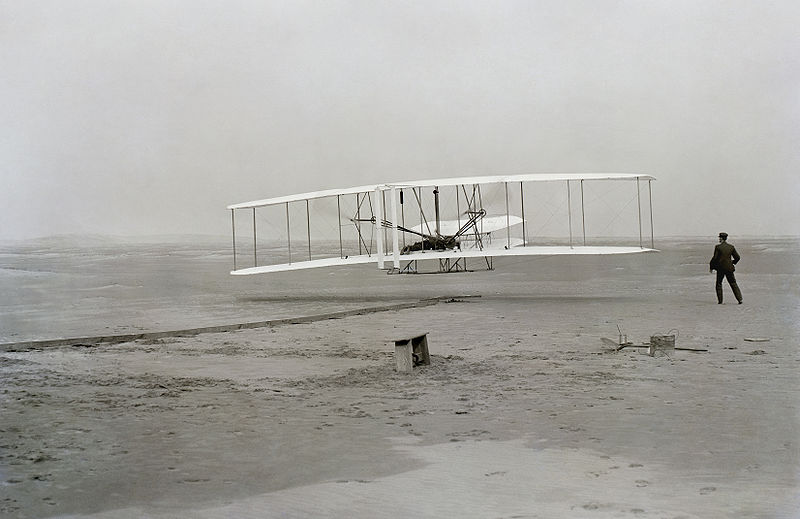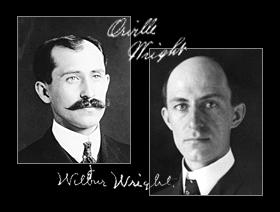People: Orville and Wilbur Wright

Fly, Wilbur, fly! Photo uploaded by Wikipedia.org.
As Orville piloted their flying machine a week before Christmas in 1903 and Wilbur ran alongside, do you think the Wright Boys had any inkling that their contraption would lead to a radical change in the mobility of the world’s population, to aerial warfare, and to travel into space itself?
Probably not. The two brothers from Dayton, Ohio just knew that they had accomplished something they’d been working on for years – the first controlled, powered, and sustained heavier-than-air flight.
They’d spent the previous years building gliders so they could get the elusive control of the aircraft that was proving to be the main stumbling block to success. Several of their contemporaries who were also striving to be first in the air died as a result of lack of control during flight, so the Wrights knew their future depended on their engineering expertise.

The Smith Brothers. No, sorry, the Wright Brothers. Uploaded by kidcyber.com.au.
First they built kites, testing mechanisms for steering. Then they built gliders, continuing to modify wings and rudders. They took their experiments to Kill Devil Hills, North Carolina because of its consistent winds and soft, sandy landing areas. During fall of 1902 they made between 700 and 1000 glider flights lasting up to 26 seconds.
Finally, they were ready for a patent for their flying machine. They had the mechanic in their bicycle shop build their first engine in just six weeks. Their final airplane was 40 feet long, weighed 625 pounds, and had a 12 horsepower engine. It was enough to get Wilbur off the ground to a height of 10 feet and a distance of 120 feet in 12 seconds, a speed of 6.8 miles per hour. The brothers alternated three more flights, the last of which covered 200 feet.
While some have disputed the Wright Brothers’ claim to making the first airplane flight, their efforts are recognized by Fédération Aéronautique Internationale, the international record-keeping organization for aeronautics. The original Wright Aeroplane is now on display in the Smithsonian Air and Space Museum.
[youtube=http://www.youtube.com/watch?v=uT2dQB_OgFE&hl=en&fs=1&]
